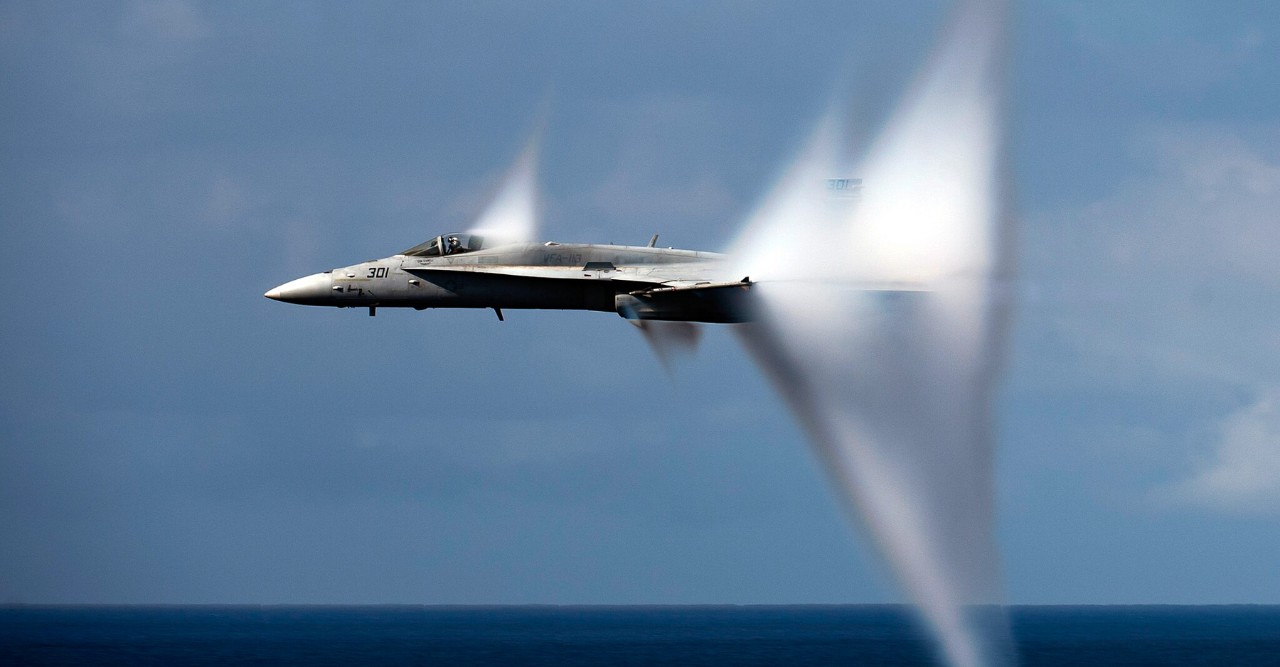
UC professor feels need for speed
New associate fellow of AIAA studies hypersonic flight
Flight faster than the speed of sound is the next frontier of commercial aviation.
In his aerospace engineering lab, University of Cincinnati Professor Prashant Khare and his students examine the properties and complications of hypersonic flight.

Prashant Khare. Photo/Provided
“Achieving the dream of economical hypersonic flight would transform the world,” Khare said.
The last commercial plane to fly at supersonic speeds, the Concorde, traveled at Mach 2 or twice the speed of sound before it was retired in 2003. But in Khare’s laboratory, he and his students are studying air travel of up to Mach 25, topping speeds of 13,500 mph. Khare’s work was recognized by the American Institute of Aeronautics and Astronautics which this month named him an associate fellow.
“This distinguished group of professionals has made significant and lasting contributions to the aerospace profession,” AIAA President Dan Hastings said. “They exemplify a dedication to excellence in advancing their specific technical disciplines.”
Previously, Khare was recognized by the Dayton-Cincinnati chapter of the AIAA with the science award for outstanding technical contributions for his scientific breakthroughs in the field.
“Being acknowledged by AIAA reflects both the contributions I've made to the field of aerospace engineering and the strong support I’ve received from the university,” Khare said. “I am deeply grateful for the environment of innovation, collaboration and academic excellence that UC leadership have cultivated. And I am proud to bring this honor back to our community.”

The hypersonic Concorde flew at nearly two times the speed of sound before its service was discontinued in 2003. Photo/N. Nehring
Hypersonic flight is featured in the opening of the movie “Top Gun: Maverick,” when the test pilot played by Tom Cruise pushes an experimental aircraft to 10 times the speed of sound. Cruise’s plane hurtles across the stratosphere at more than 7,600 miles per hour. Another character proclaims him “the fastest man alive.”
The scene plays out like pulpy summer blockbuster fun, which it is, but Khare said the scene is hardly science fiction.
“That movie is a good example because, as you can imagine, objects moving that fast begin to heat up,” Khare said. “When he gets to Mach 10, you can see the edges of the aircraft begin to glow.”
Imagine, you could travel internationally in under two hours.
Prashant Khare, Head of UC's Aerospace Engineering and Engineering Mechanics
Temperatures on exposed surfaces at hypersonic speeds at extreme altitudes can reach as high as 5,000 degrees Celsius, which is nearly as hot as the surface of the sun.
Khare is studying ways to overcome the barriers to hypersonic flight. His research group is studying new propulsion systems needed to reach those speeds, including rotating detonation engines and liquid- and gas-fueled engines such as a scramjet featured in the movie. And they are also examining the unique fluid dynamics that aircraft encounter at those speeds.
“Things start to melt at those temperatures,” Khare said. “The temperatures are so high, the air itself starts to break down.”
Air molecules break apart creating electrically charged plasma around the aircraft, he said.

Prashant Khare, head of UC's Department of Aerospace Engineering and Engineering Mechanics, is studying the challenges surrounding hypersonic flight. Photo/Ravenna Rutledge/UC
If hypersonic flight were possible, travelers going from New York to London wouldn’t have time to see if Maverick completes the big mission at the end of the movie.
“Imagine, you could travel internationally in under two hours,” Khare said.
Still, flight at those speeds is likely to remain out of reach for most travelers.
“Airline passengers would not be able to withstand the G-forces,” Khare said. “But a trained commercial pilot could transport goods quickly across continents.”
Featured image at top: A vapor cone forms around an F/A-18C Hornet as it breaks the sound barrier. Photo/Travis K. Mendoza/U.S. Navy
Next Lives Here
The University of Cincinnati is leading public urban universities into a new era of innovation and impact. Our faculty, staff and students are saving lives, changing outcomes and bending the future in our city's direction. Next Lives Here.
Related Stories
UC professor feels need for speed
September 26, 2024
The world's largest aerospace group named UC Professor Prashant Khare an associate fellow. He is studying hypersonic flight in his aerospace engineering lab.
UC inventor recognized for lifetime of innovation
January 10, 2025
UC College of Engineering and Applied Science Professor Ephraim Gutmark is being honored for a lifetime of innovation by the National Academy of Inventors. For one of his latest projects, Gutmark teamed up with his physician daughter at Cincinnati Children's to help children with breathing difficulties.
